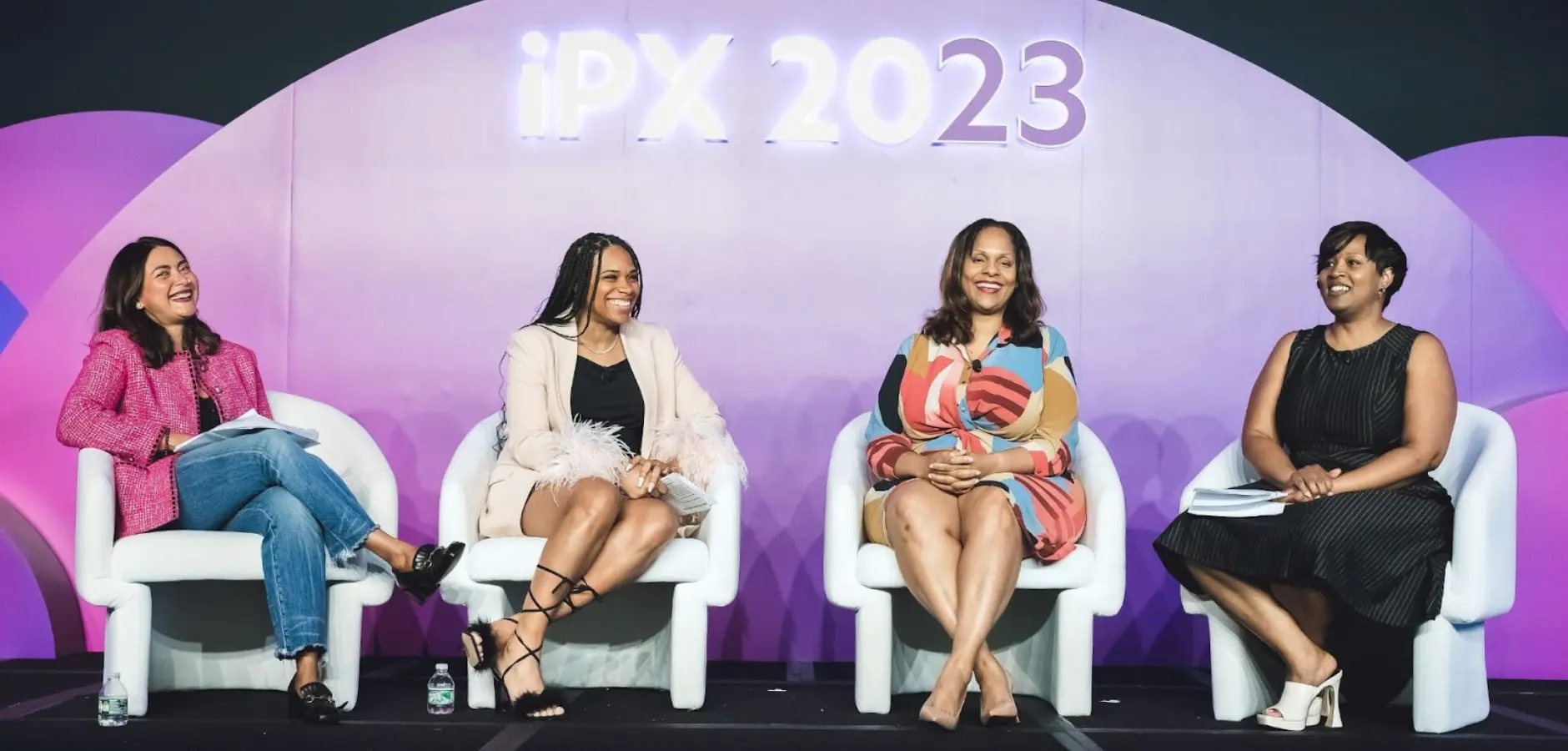Disney cast Halle Bailey as Ariel in The Little Mermaid, offering brands an example of intentional diverse representation. Fans watched wholesome reactions from young Black girls who felt represented as a classic Disney princess.
Similarly, the creator economy offers brands a unique opportunity for deliberate inclusive partnerships while amplifying the voices of marginalized groups. These groups include Black, Indigenous, and People of Color (BIPOC), women, LGBTQ+, individuals aged 50+, people with disabilities, and neurodivergent.
Leading brands are already reaping the rewards of inclusive partnerships. Hyundai UK leveraged the influential power of travel creators Eulanda and Omo to promote Hotel Hyundai—the world’s first car-powered hotel.

Source:@dipyourtoesin
Tapping into these groups creates a link to a niche market, promotes a diverse network of mentors for future partners to look up to, and brings unprecedented benefits.
- Reaches a broader audience
- Encourages genuine word-of-mouth
- Builds an accepting and inclusive brand reputation
- Promotes higher brand loyalty
- Increases return on investment
- Influences positive social change
Uncover the challenges preventing inclusivity and discover actionable strategies you can implement today to create partnerships that profit your audience, partners, and brand.
Key takeaways
- Inclusive partnerships actively seek ways to bridge the gap created by stereotypes and preconceived notions. Your audience will start to experience and connect with your brand authentically and fully.
- Challenges preventing inclusive partnerships include misunderstanding intersectionality, pay disparities, unequal opportunities, and performative diversity.
- Reflect inclusive values internally by implementing equitable and inclusive company policies, embracing diverse team representation, and creating Business Resource Groups.
- Get in tune with your audience to gain valuable demographic data to tailor better strategies and tell compelling stories.
- Actively seek partnerships with marginalized and historically underrepresented partners and be transparent about your selection.
- Empower partners with equal access to resources, education, and pay.
- Align your brand with change efforts by leveraging corporate social responsibility partnerships and joining advocacy groups that align with the values of your audience.
4 common challenges preventing inclusive partnerships
Brands can create truly impactful partnerships with an inclusive strategy, such as Banish’s collaboration with Chelsea Linares. With nearly 5 million views on YouTube, the Latina beauty influencer authentically shares her experience with acne scars, treatments, and the journey to skin repair. Chelsea helped the organic skincare brand expand its reach and promote sales with exclusive codes.
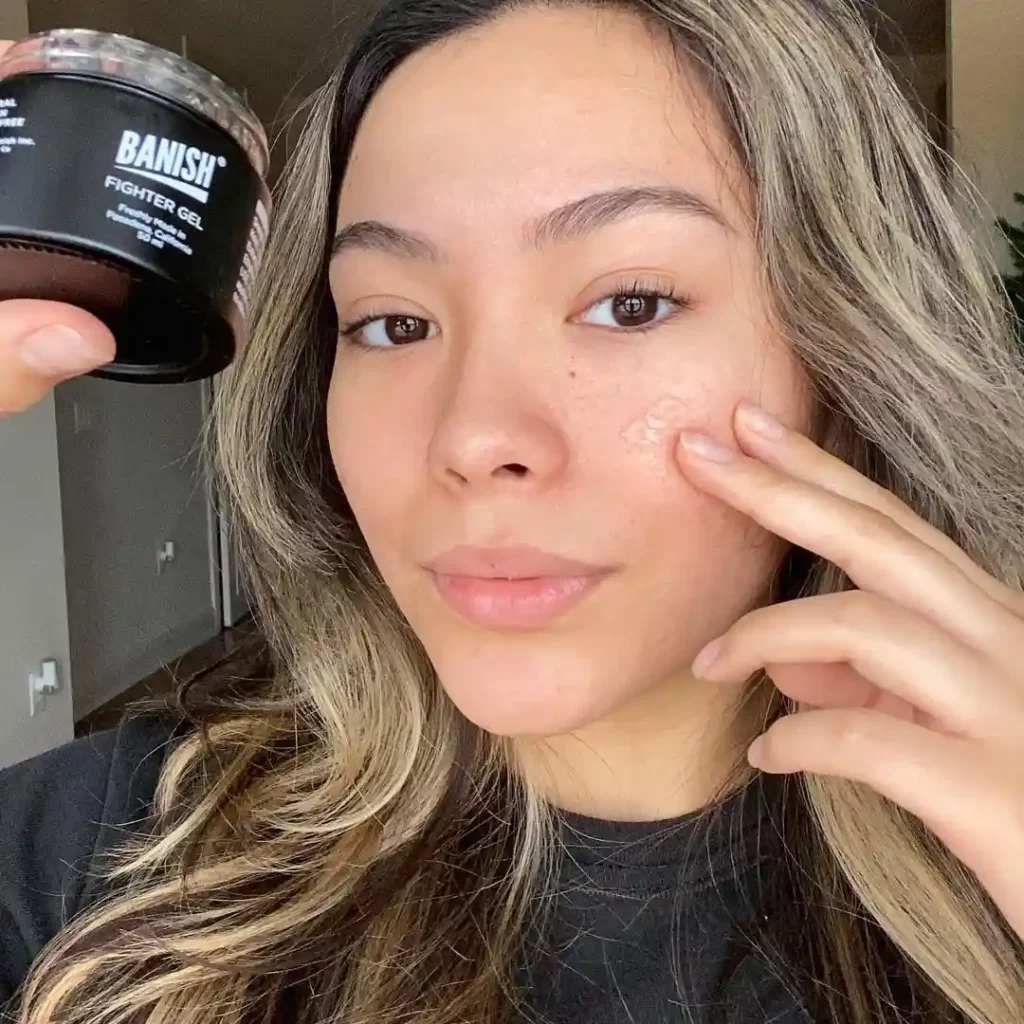
Source: @chelsea.linares
Meaningful change happens when you identify obstacles preventing inclusivity. A successful plan addresses the challenges experienced and ensures all voices are heard.
1. The misunderstanding of intersectionality
Kimberlé Williams Crenshaw coined intersectionality in 1989. Intersectionality explores how various identity factors—gender, race, ethnicity, sexual orientation, disability, class, and other forms of discrimination—overlap, creating unique dynamics and effects.
Intersectionality works much like the intersection of a traffic light, with traffic coming from four different directions. An accident can affect traffic from any or all directions. This analogy shows that the impact of any identity factor can’t be separated from the others.
So, the more intersections a person has, the bigger the impact of discrimination. For example, a Black queer woman faces racism, homophobia, and sexism.
Maria Cadet, lifestyle blogger and content photographer, shares her experience facing challenges based on race/ethnicity and color.
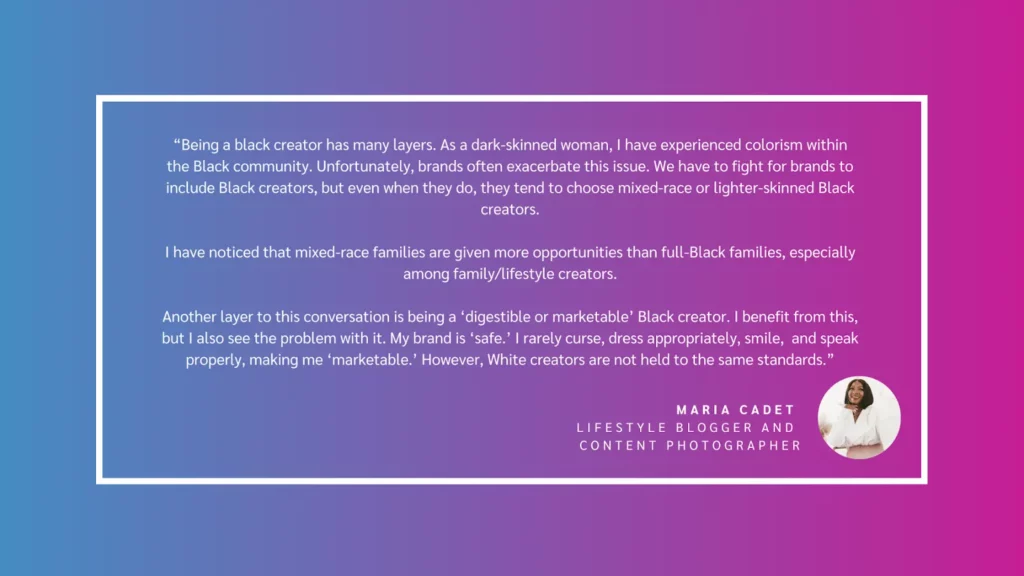
Intersectionality encourages the acknowledgment that disadvantages and privileges operate along multiple lines of identity. Brands and partners must take the intersectionality approach to analyze discriminations within discriminations and address inequities within inequities.
2. The reality of pay disparity
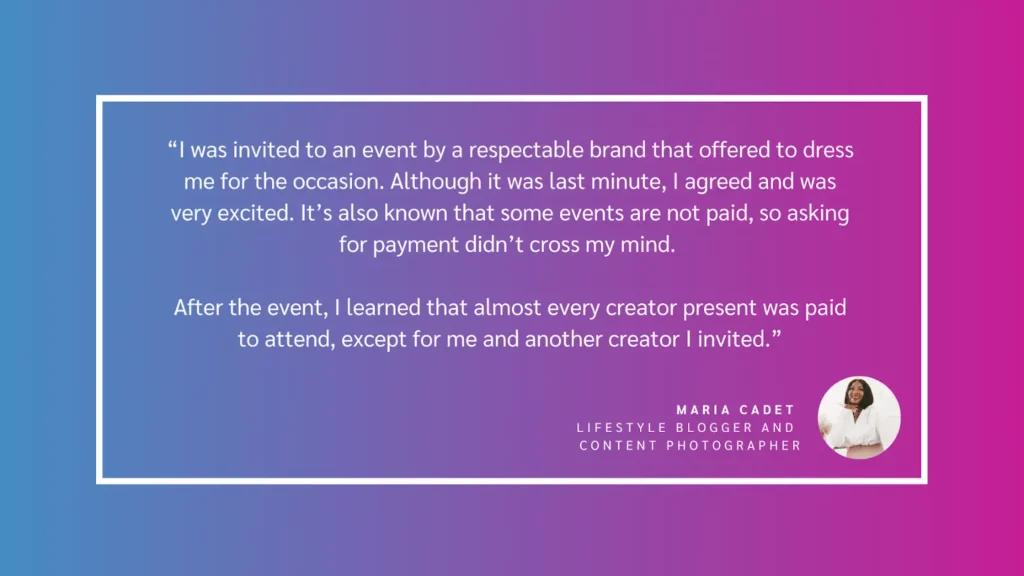
Maria Cadet’s experience is just an example of the pay disparities experienced by marginalized and historically underrepresented groups. Research reveals racial and gender pay gaps are widespread, presenting a chance for brands to correct inequity and drive change.
- Black influencers make 67 percent less than White influencers for sponsored Instagram stories.
- Nearly 23 percent of Black influencers stated that ethnicity influenced being offered a lower rate than expected.
- BIPOC and Black creators charge 25 percent less for sponsored YouTube content than White creators because of a lack of industry support and education.
3. The presence of unequal opportunities
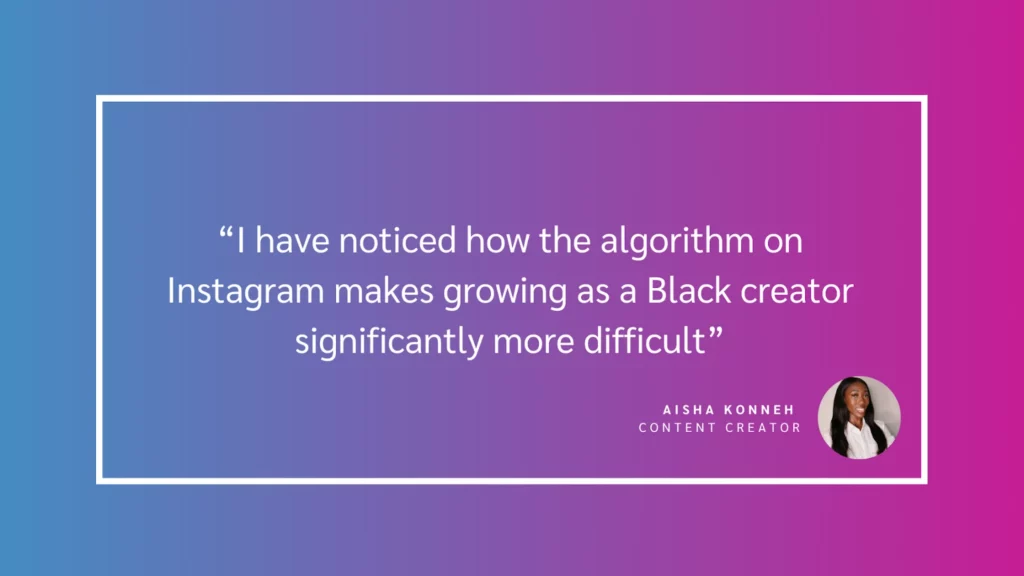
Content creator Aisha Konneh reflects on some unique obstacles BIPOC creators experience. Shadowbanning refers to when a social media platform hides or restricts user’s content without notifying the user that its happening. In addition, research into pay disparities by Shreya Mukherjee, Chief Strategy Officer of MSLGROUP, revealed other key discrepancies.
In truth, White influencers are nearly twice as likely (73 percent) to get a sponsored brand deal than BIPOC influencers (46 percent) in the first year in the industry. Brands must confront these realities experienced by marginalized groups. In doing so, you reveal ways to bridge the gap and create equal opportunities. Common challenges can include—but are not limited to:
- Female partners fight gender norms and stereotypes that box them into being represented in domestic roles.
- LGBTQ+ creators receive targeted online abuse, and their content is often censored for being perceived as adult-oriented even when it isn’t.
- People with disabilities are challenging ways to change the narrative around the media’s presentation of disability.
Brittany Bright, Founder and CEO of The Influencer League, recounts the birth of the idea of her company as an answer to the need for more representation and fairness in influencer campaigns.
4. The existence of performative diversity
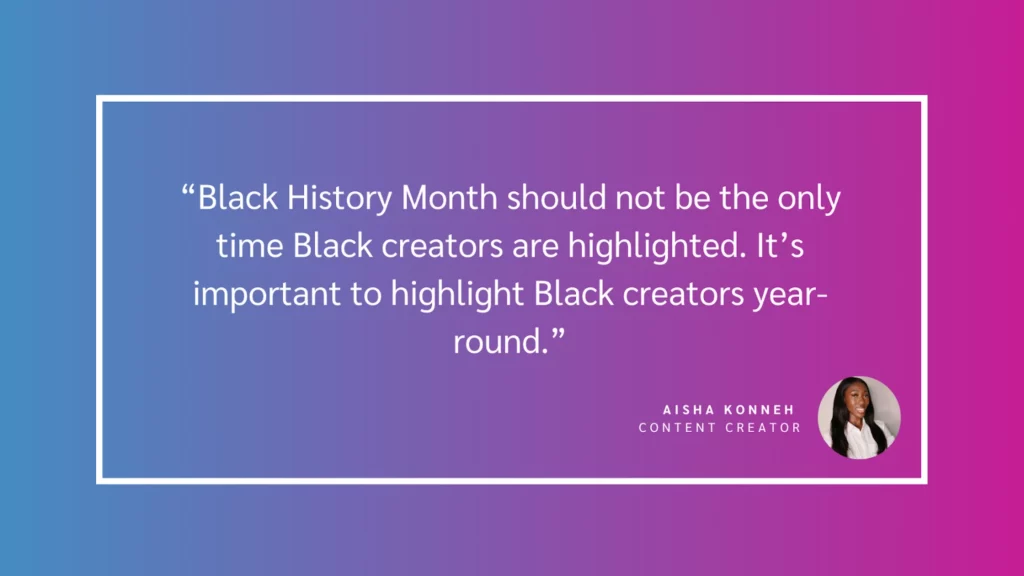
Partnerships thrive on creating authentic connections with customers—performative diversity counteracts authenticity. Performative diversity uses people in marginalized and historically underrepresented groups to prevent criticism. Brands appear representationally diverse without addressing and correcting the inequities they perpetuate.
Performative diversity rears its head in many ways. Some examples include only collaborating with Latine partners during Hispanic Heritage Month or covering your content with rainbow-themed filters during Pride Month, yet failing to recognize the LGBTQ+ community throughout the year.
These actions are disingenuous and performative. Instead, Brands must celebrate and elevate diversity by representing multiple identities throughout the year. For example, tech brands can show authentic brand LGBTQ+ allyship by partnering with Justin Tech, who reviews innovative gadgets and is dedicated to raising pride awareness.
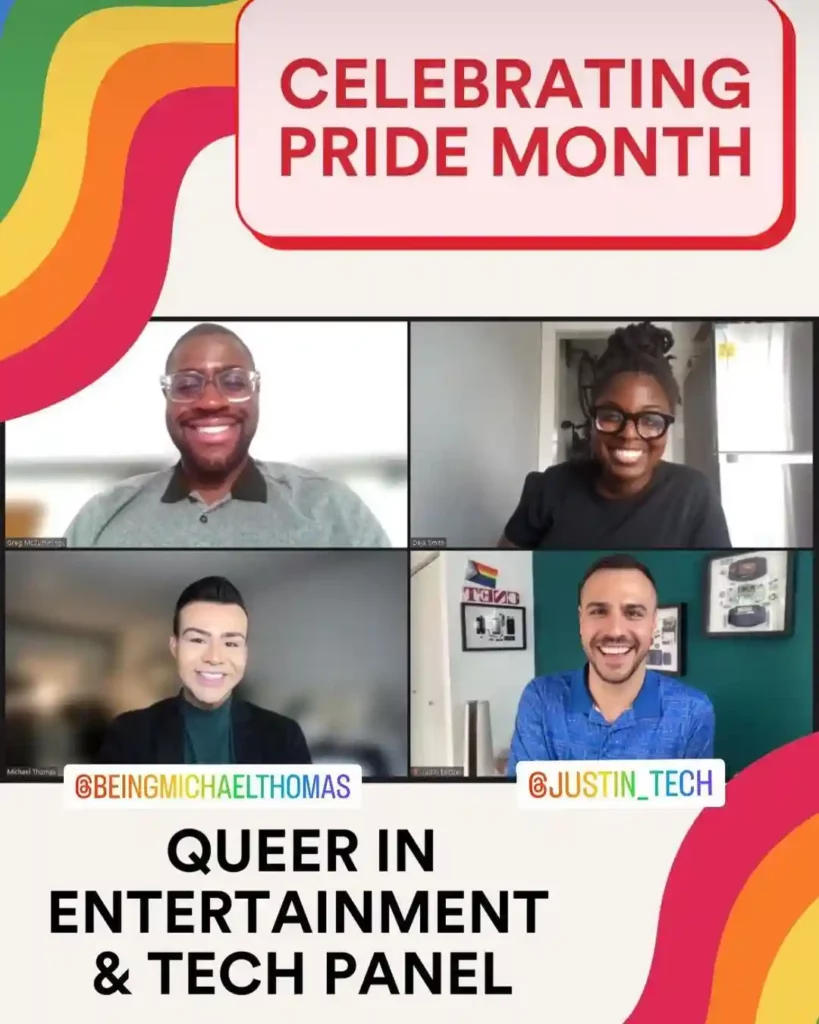
Source: @justin_tech
5 ways to lead diversity, equity, and inclusion in partnerships
Once you’ve identified the gaps in your partnership strategy that prevent inclusivity, the next step is implementing a plan to combat these issues. Inclusive partnerships actively seek actions to address the inequalities created by stereotypes and preconceived notions.
Desi influencer Tanvi Shah partnered with XRT to create a gymwear line that empowers women. Through the brand partnership, she also aimed to break the stereotypical norms within the South Asian community—and be the role model she wished she saw in media, fashion, and sport.
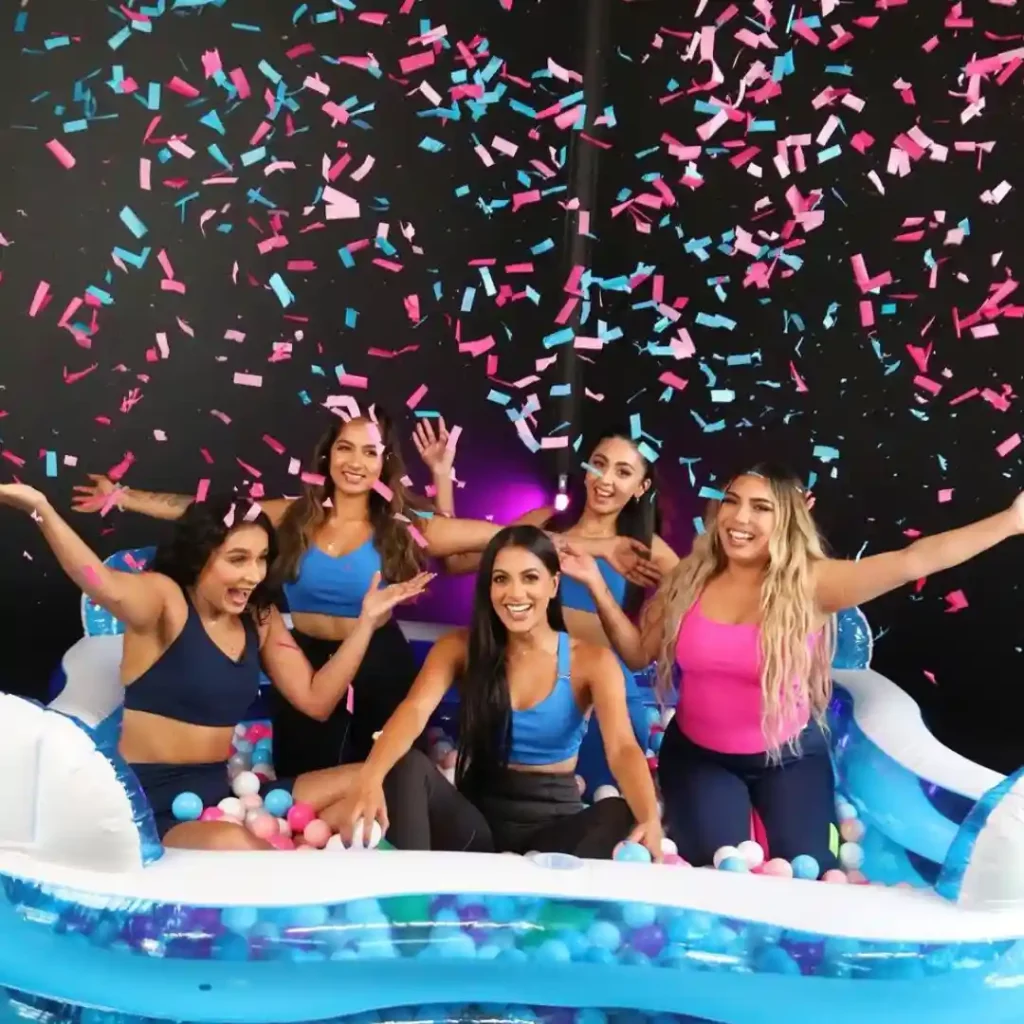
Source: @tanvi.x
With inclusive partnerships, your audience will experience and connect with your brand more authentically. Consider these helpful tips when improving equity and inclusion efforts in your partnerships program.
1. Reflect diverse values internally
Establish a full suite of Equity and Inclusion company policies. These policies outline your brand’s commitment to creating a culture of fairness, respect, and belonging. Reflect and communicate these policies internally and externally to minimize the cultural and demographic differences between your brand and your audience.

Embrace diversity within teams to produce meaningful partnerships and marketing campaigns. Ensure varying perspectives and historically excluded voices are present internally during the creative direction, review, development, and validation. This strategy drives inclusive messaging and promotes team cultural intelligence.
Creating a Business Resource Group [BRGs]. BRGs are internal, business-aligned communities with intersecting identities and interests. They offer a great way to ensure inclusive decision-making, partnership strategizing, and campaign-building.
2. Listen and learn about lived experiences
Over 60 percent of consumers are more likely to consider or even purchase after seeing an inclusive or representationally diverse ad—such as a product plug from beauty and modest fashion creator Luley Jeylani.

Source: @laced.journ
Tapping into key consumer insight will help you tailor winning partnership strategies. Additionally, tuning into customer wants, needs, and expectations helps brands offer products and services that match their values, interests, and beliefs.
With a diverse pool of partners, brands have genuine connections to their audience to collect important demographic and psychographic data. With these insights, teams can identify gaps or disparities in their partnership campaigns and make informed decisions to improve equity and inclusion.
Active and consistent engagement in local communities introduces your brand to different lived experiences. With a deeper understanding of marginalized and historically underrepresented groups, brands can tell compelling, relevant stories and convey resonant messages.
Orchid Richardson, Senior Vice President of Blavity Group, shares her insights on partnering with niche companies to understand your target audience better.
3. Promote diverse representation through authentic partnerships
Intentionally seek partnerships with members of marginalized groups, including LGBTQ+, women, BIPOC, neurodivergent, people with disabilities, or partners aged 50+. Amplifying diverse voices and perspectives through partnerships aligns your values with your customers’ intersecting identities and values.
Find inspiration for success by looking at examples of representation. Athletic apparel brand Vuori partnered with style blogger Justin Borbeto to showcase the new range of men’s athletic products.

Source: @igjustin
As leaders in storytelling, creators build uplifting communities. Haitian sister duo Shelcy and Christy created NYCxClothes as a visual storytelling platform. They explore fashion through a cultural lens, helping brands bring their messaging to life with thoughtful content creation.
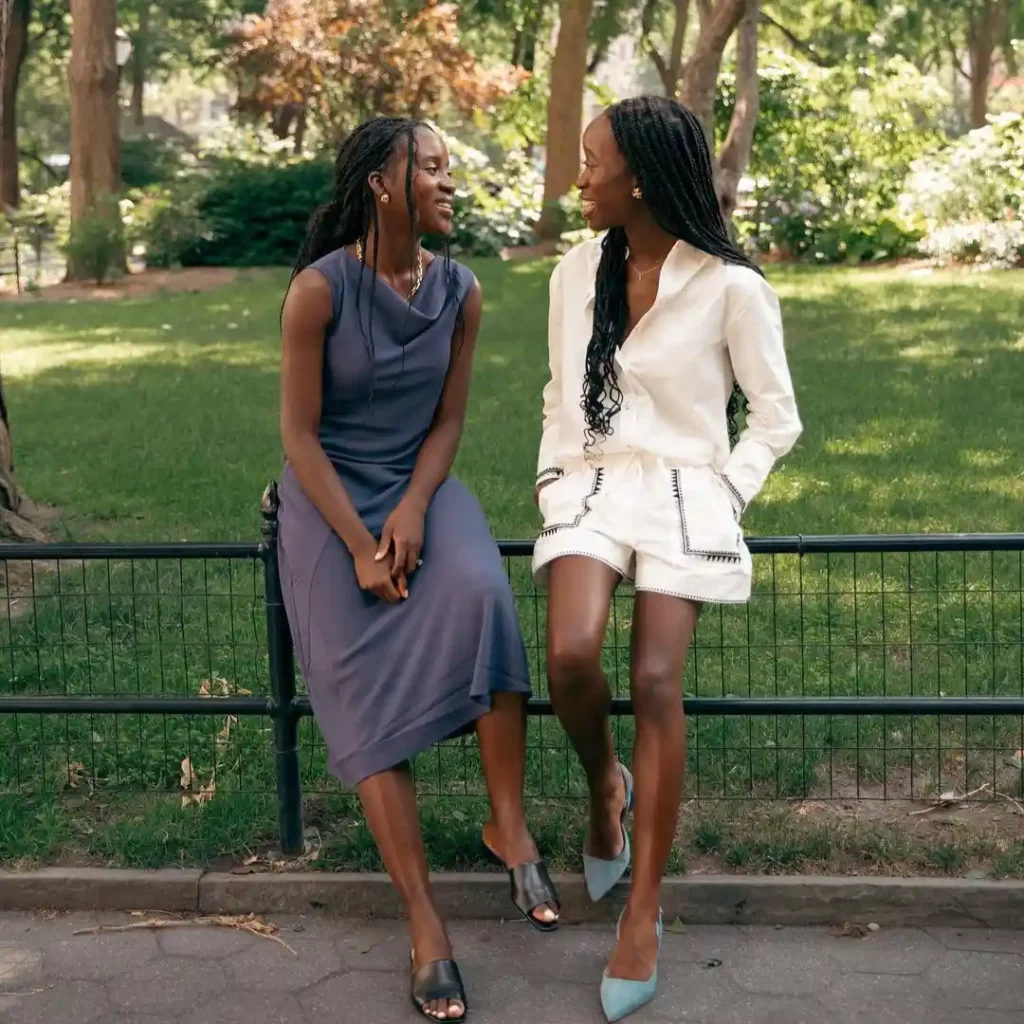
Source: @nycxclothes
Engaging partners that intimately understand and communicate with diverse audiences builds authenticity in campaigns. Collaborating with brands specializing in connecting with a niche audience, like Blavity Group, affords you access to invaluable benefits.
Be transparent about your partner selection. Recruitment policies, practices, and strategies should promote fairness and equal opportunity. Openly communicate sourcing criteria and selection processes to avoid bias, discrimination, and non-inclusion.

4. Empower partners with access to resources and education
Brands leveraging partnerships have the opportunity to establish mentorship and training programs with partners from historically underrepresented communities. Arming your partners with industry knowledge on best practices, pricing, and negotiations helps them and you. Through these initiatives, companies can develop partner skills and offer resources for success in nurturing life-long, loyal partnerships.
5. Align your brand with change efforts
As 46 percent of customers consider a brand’s social responsibility efforts when making a purchase decision, corporate social responsibility (CSR) / environmental, social, and governance (ESG) / social impact partnerships allow companies to embrace a purpose-driven brand strategy.
For example, the Ethopian-based ecommerce brand Parker Clay sells sustainably-produced leather goods. It also provides jobs for the women in the country to uplift their communities—creating generational change.
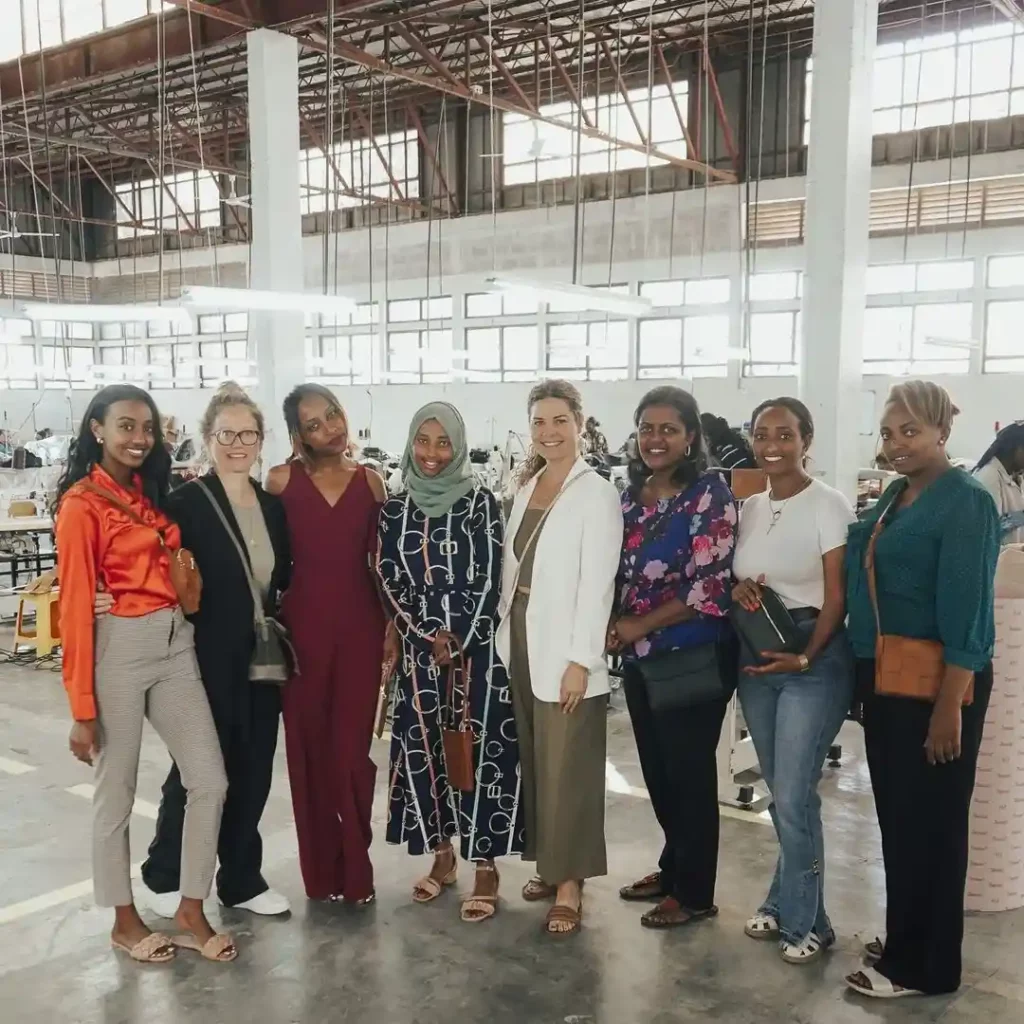
Source: @parkerclay
Demonstrate how purpose fuels your business by committing to championing sustainability, advocating for equity and inclusion, and supporting social issues. As a result, you improve your brand image, increase brand loyalty, and build stronger community relationships. To see a noticeable change, embody and emulate purpose in your everyday life to improve self-awareness and encourage positive social change.
Power more diverse and inclusive partnership
The marketplace is ever-changing, constantly evolving, and increasingly transforming. Partnership and business strategies must be adaptive to ensure they align with change. Diversifying your partner mix to be more representative enriches authentic partnerships, opening greater opportunities for business growth. Start implementing change with these strategies and tailor them to your industry to begin seeing results that matter.
Learn more about creating partnerships that champion diversity and inclusion with these impact.com resources:
- 5 tips for authentic brand LGBTQ+ allyship [infographic]
- 5 ways it pays to build multigenerational partnerships [infographic]
- Partner learning paths [Free PXA course]
